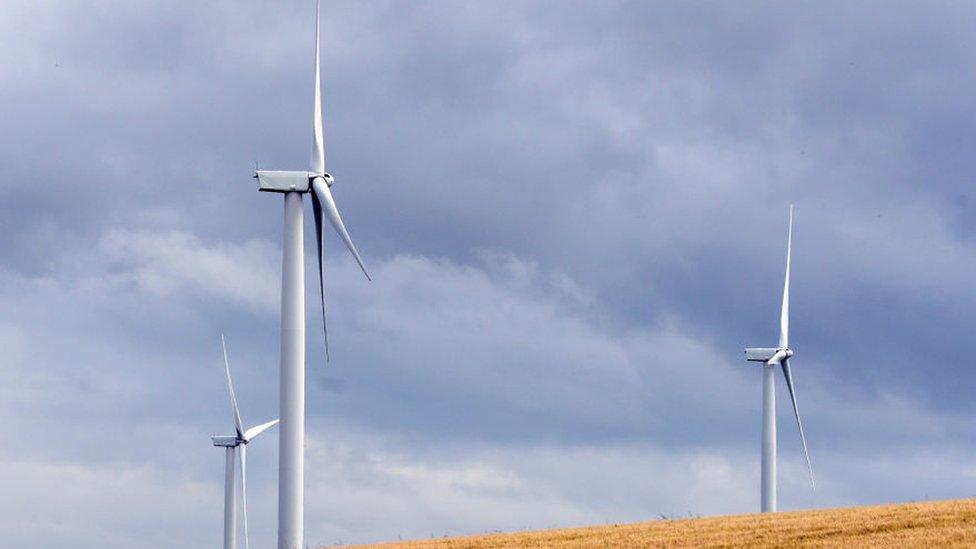Call for action after dip in renewable energy generated in NI
- Published

There has been a call for a taskforce to be established after figures showed a slight dip in the amount of electricity generated from renewable sources in Northern Ireland.
Figures show renewable sources provided 47.4% of electricity consumption in the year to September 2023. , external
That was down 1.6 percentage points on the same period last year.
And the amount of electricity generated from wind also fell slightly to 84.8%, compared to 84.9% to September 2022.
Other local renewable sources contributed 565 gigawatt hours (Gwh) to electricity generation.
Need to 'ensure NI gets back on track'
Steven Agnew, the director of RenewableNI which represents the sector, said it was "disappointing" and that Northern Ireland had lost its position as a global leader in renewable projects.
"Only 86MW of new large-scale generation has been connected this decade.

Northern Ireland has a legally-binding commitment to ensure at least 80% of electricity consumption is from renewable sources by 2030.
"Investment in the sector has stalled," he said.
"More than $350bn of capital has poured into renewable infrastructure investment around the world in the first half of 2023, yet Northern Ireland has attracted virtually nothing.
"A taskforce needs established urgently to ensure NI gets back on track for meeting its renewables target," he added.
Northern Ireland has a legally-binding commitment to ensure at least 80% of electricity consumption is from renewable sources by 2030.
A yearly report from the Department for the Economy, external aids reporting on that performance.
More than seven thousand gigawatt hours (GWh) of total electricity was consumed in Northern Ireland from October 2022-September 2023.
Nearly three and a half thousand GWh of that came from renewable sources located in Northern Ireland.

Analysis: 'The sun doesn't always shine in Northern Ireland'
Small fluctuations like this are to be expected when dealing with Mother Nature - the wind doesn't always blow and the sun certainly doesn't always shine in Northern Ireland.
But locally-generated renewable energy supply is also an insulation against the sometimes-volatile markets where the gas that also generates electricity has to be purchased.
There is no doubt that expansion of the capacity for wind generation is a significant player in meeting our 2030 target of at least 80% electricity from renewable sources.
More significant would be the development of off-shore wind, but that is in the hands of the Crown estate, which manages the seabed.

Related topics
- Published7 September 2023
